Peroneal tendonitis: Physiotherapy Treatment
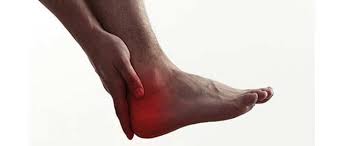
Table of Contents
Definition:
Peroneal tendonitis occurs when the peroneal tendons become inflamed. This happens when there is an increased load and overuse of the tendons, leading to them rubbing on the bone.
Peroneal tendinitis is a condition that can be acute or become chronic (peroneal tendinopathy) whereby there is an irritation to one or both peroneal tendons with subsequent degeneration and inflammation.
Causes
People who take part in a sport that involves repetitive ankle motion are most prone to peroneal tendonitis.
Factors that can contribute to peroneal tendonitis include:
overuse: a sudden increase in training, particularly weight-bearing activities, such as walking, running, and jumping, improper training techniques inadequate or un-supportive footwear
Foot anatomy showing muscles. There are also some other issues that can increase a person’s risk of developing peroneal tendonitis:
Higher foot arches: lower limb muscles and joints not working well together imbalanced muscles in the lower limbs. If someone fails to complete a rehabilitation program following an ankle injury, such as a sprain, they are also more likely to develop peroneal tendonitis. Over time, the damaged peroneal tendons will thicken as scar tissue tries to repair the damaged area. This makes the tendons weaker and more prone to tearing.
Types of Peroneal Tendon Injuries:
There are several specific types of tendon injuries that may affect the peroneal tendons. Any of the following sources of tendon-related pain can produce symptoms that range from mild to severe. Regardless of which specific type of injury may be a source of discomfort, it’s important to seek treatment if the pain is severe or affecting the ability to go about daily activities.
Acute Tears:
Also caused by repetitive stress or trauma, acute tears can involve partial or complete tears of the peroneal tendons. Patients with acute tears often report sharp pain, swelling, and instability of the foot and/or ankle. If left untreated, tendon tears may alter the shape of the foot and affect the arch.
Degenerative Tears:
Degenerative tears are also referred to as a condition called tendinosis which is also an overuse injury. It usually affects peroneal tendons slowly, often over a period of years. Tendons become increasingly stretched and tissues become thinner and less supportive. Common symptoms include an increase in arch height, ankle
intability, and pain along the outside of the ankle that occurs periodically, but not all of the time.
Sub-luxation:

Peroneal tendonitis sub-luxation
Peroneal tendons may be affected by Subluxation, a condition where one or both of these tendons slips out of their normal position. The problem may be due to an existing structural issue with feet that was present at birth. It can also occur as a result of sudden trauma. If tissues that stabilize the peroneal tendons are also damaged, patients may experience chronic pain.
Symptoms typically include ankle weakness, persistent pain around the ankle bone, and a “snapping” sensation when walking or placing weight on the affected foot. Early treatment can prevent the affected peroneal tendon from tearing as it continues to slip further out of place.
Symptoms:
Peroneal tendonitis can either be acute, meaning that it comes on suddenly; or it can be chronic, meaning that it develops over time.
In both cases, there are some common symptoms: pain at the back of the ankle pain that worsens during activity and lessens during rest pain when turning the foot in or out swelling at the back of the ankle instability of the ankle when bearing weight the area is warm to the touch
Diagnosis:

X-ray being taken of woman’s foot. It is important to determine that the pain is in the peroneal tendons and not the fibula, as this could indicate a different problem.
A physiotherapist or doctor will use a variety of techniques in a physical exam to look for symptoms, generally by moving the foot and ankle into different positions and applying pressure. An X-ray, ultrasound, or MRI scan might also be used to rule out any breaks, identify abnormal swelling or scar tissue, and to further help with diagnosis.
Risk factors:
Risk factors for tendonitis include repetitive movement, trauma, thermal injury to the tendon, use of certain antibiotics (such as levofloxacin and ciprofloxacin), and smoking.
Complication:
A few common ones include sural nerve injury, progression of symptoms, chronic lateral ankle pain, and loss of range of motion. Any surgery poses a risk of infection and failure of the intent of the procedure.
Treatment
Treatment for peroneal tendonitis typically involves a combination of conservative measures aimed at reducing pain and inflammation, promoting healing, and addressing the underlying causes. Some common treatment options include:
Rest and activity modification: Avoid activities that worsen the symptoms and give the tendons time to heal.
Ice therapy: Use ice pack on the affected area can help relieve pain & inflammation. Ice packs should be applied for 10-20 minutes 2 to 3 times a day.
Pain-relieving Medicines such as Nonsteroidal anti-inflammatory drugs (NSAIDs)/Over-the-counter pain relievers like ibuprofen or naproxen can help reduce pain and inflammation.
Physical therapy: A physical therapist can develop a customized rehabilitation program to strengthen the muscles around the ankle, improve flexibility, and address any biomechanical issues.
Orthotics and footwear modifications: Arch supports, shoe inserts or custom orthotics can provide better support and stability for the foot and ankle.
Immobilization: In severe cases or when conservative treatments fail, a walking boot or ankle brace may be recommended to immobilize the ankle and allow the tendons to heal.
Corticosteroid injections also be used to relieve pain, inflammation. However, these injections are typically used sparingly due to potential side effects and should be done under the guidance of a medical professional.
It’s important to consult with a healthcare professional, such as a doctor or physical therapist, for an accurate diagnosis and appropriate treatment plan for peroneal tendonitis. They can provide specific recommendations based on your individual condition and medical history.
Physiotherapy Treatment of Peroneal Tendonitis:
Peroneal tendonitis is a common injury in runners and endurance athletes. With proper rest and conservative management, it often heals without surgery. Stretching may help increase flexibility and maintain the range of motion in the foot and ankle.
Benefits of stretching:
Controlled stretching is known to increase collagen synthesis and improve muscle fiber organization. A better organization may result in stronger muscles and tendons after recovery. During the recovery phase of a tendon injury, your physical therapist may prescribe a home exercise program that includes stretching and strengthening exercises.
The goal of stretching is to prevent problems due to adhesions, shortening, or improper healing in the tendon. Check with your therapist to see if these stretches can help to decrease symptoms and maintain flexibility in the ankle and calf following peroneal tendonitis.
Towel stretch:

Towel stretch
Stretching the muscles of the foot and calf may help decrease your pain and improve the healing of a peroneal tendon injury. This stretch can be performed by sitting on the ground with your feet straight out in front of you:
- Wrap a towel around your toes and gently pull back until you feel a stretch at the bottom of the foot and back of the lower leg.
- Hold this stretch for 30 seconds and repeat three times.
Standing calf stretch:

A standing calf stretch allows for more tension on the ankle and calf than while stretching in a sitting position:
- Stand to face a wall, one foot extended out in front of you, toes pointing up.
- Slowly lean forward until you feel a stretch in the back of your lower leg.
- Hold for 30 seconds and repeat three times.
Standing soleus stretch:
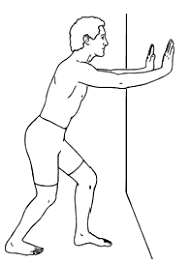
Standing soleus stretch
The soleus muscle is a deep calf muscle that is often tight in endurance athletes. You can stretch this muscle by doing the following stretch:
Standing soleus stretch:
- Stand a few feet away from a wall and face the wall.
- Your injured leg should be back with your heel on the floor. Bring your other leg forward, toward the wall.
- Turn your injured foot slightly inward toward the other.
- Keep your other leg forward and slightly bend that knee and lean into the wall until you feel a stretch on your affected leg.
- Hold for 30 seconds and repeat three times.
Eversion and inversion:
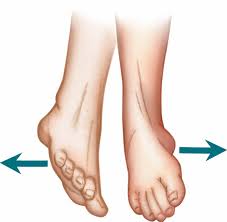
Eversion and inversion
Maintaining flexibility of the ankle is important during recovery. Since the peroneal tendon helps assist in turning the foot outward (eversion), this motion can often be difficult and painful. Don’t do any movement that causes pain. Check with your physical therapist for alternatives if needed.
- Sit on a chair with the affected leg crossed over your other knee.
- Holding the bottom of the foot with your hand, slowly tilt the sole of your foot toward the floor.
- Hold this position for 5 to 10 seconds and then pull your foot toward you, tilting it to the ceiling. Repeat 10 times.
Related Other Article :


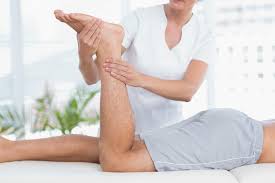

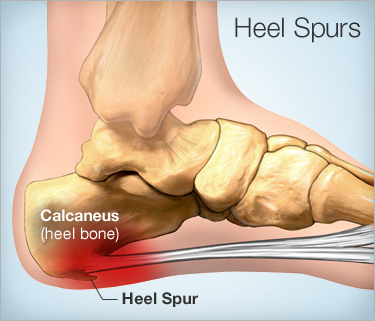
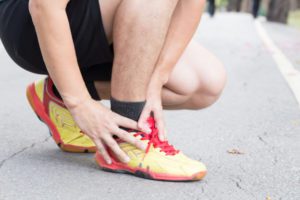
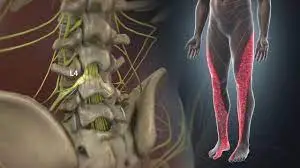
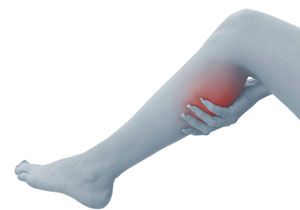

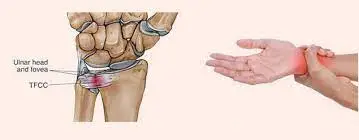
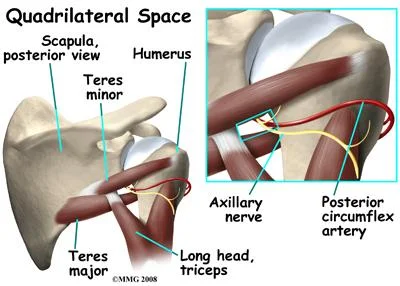
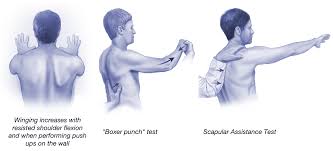
2 Comments